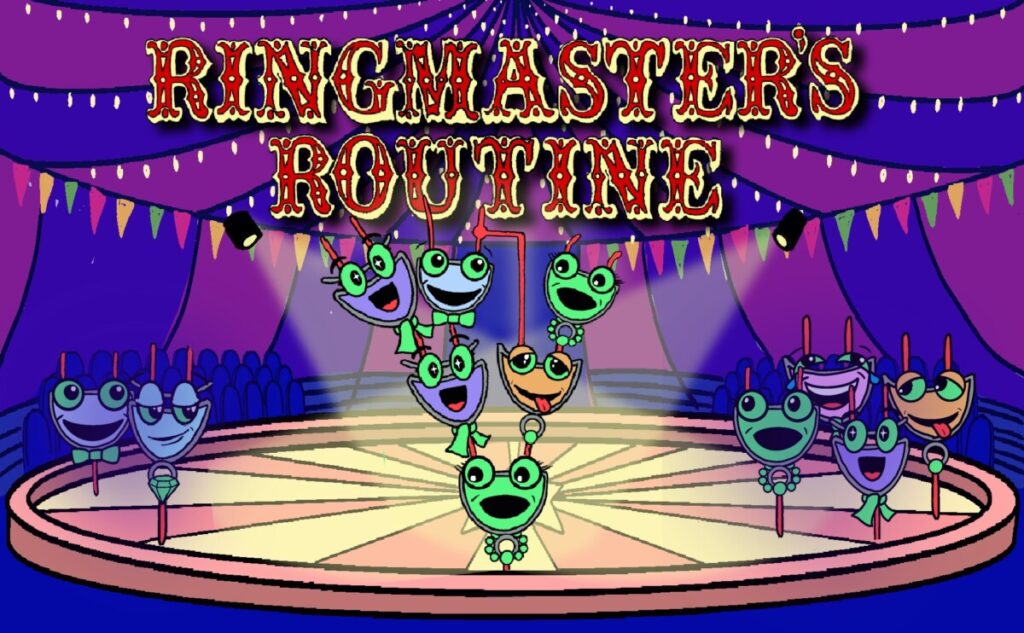
Preview
The circus tricks are getting trickier! In Episode 5, we started studying circuits that arise from compositions of logic gates. In this episode, we chain even more logic gates together to form even more complicated circuits! It’s important to understand that nothing really new is happening in this episode; we already understand all the information, there’s just more information for us to keep track of.
Play
In the following circuit diagram, we see that some inputs duplicate themselves so that they can be inputs in different gates. Whenever you see a node with a little dot, this means that an input is duplicating itself. If a node does not have the little dot, it just means inputs or outputs are moving past each other; they are not affected at such crossings.
Play with the inputs of this interactive circuit diagram to see how the outputs change. What are the outputs at intermediate nodes? What would the truth table for such a diagram look like?
Hint: if the interactive tool does not work on your device, you can watch this video.
Progress
Drag the gates on the right into the empty spots on the left to create a logic diagram represented by the Boolean expression:
$(A \oplus B)’ + \Big((A \cdot B) \cdot C\Big)’$.
Drag the gates into the empty spots to create a logic diagram represented by the Boolean expression:
$\bigg((A+B) \cdot \Big((A \oplus B)’\cdot C \Big) \bigg)’$
Practice
It usually helps to think about the inputs moving through the gates in the diagram and changing or combining to make the output. Determining the truth values at intermediate nodes will help us determine the output.


